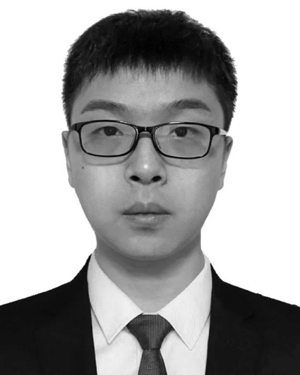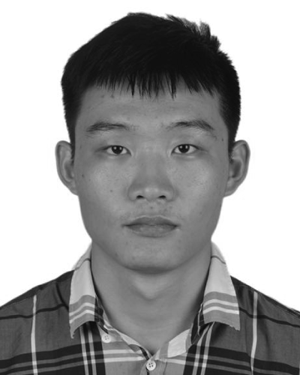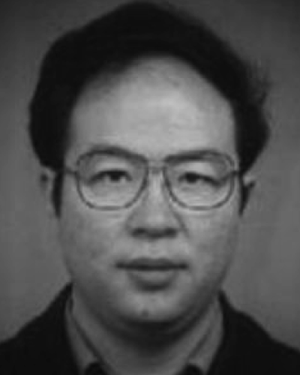Abstract:
Object detection in remote sensing images (RSIs) poses great difficulties due to arbitrary orientations, various scales, and dense location of the targets over the ground...Show MoreMetadata
Abstract:
Object detection in remote sensing images (RSIs) poses great difficulties due to arbitrary orientations, various scales, and dense location of the targets over the ground. Recent evidence suggests that encoding the orientation information is of great use for training an accurate object detector for oriented object detection (OOD). In this article, we propose a new frequency-domain orientation learning (FDOL) module with two main components: the frequency-domain feature extraction (FFE) network and an orientation enhanced self-attention layer (OES-Layer). The FFE network models the interactions among spatial locations in the frequency domain to determine the frequency of spatial features. Then, these features are fed into our OES-Layer to learn the orientation information. Moreover, the orientation weights are adopted to guide the feature selection in a self-attention (SA) architecture, using them as a control gate to emphasize the spatial responses of target instances. Considering that the original similarity weights (calculated by the SA algorithm) do not distinctly model the orientation variation, the considered orientation weights provide an efficient asset to emphasize the orientation of objects. Extensive experiments on the DOTA and HRSC2016 datasets demonstrate that our method achieves state-of-the-art performance among single-scale methods while achieving competitive performance over multiscale methods.
Published in: IEEE Transactions on Geoscience and Remote Sensing ( Volume: 60)
Funding Agency:

School of Computer Science and Engineering, Nanjing University of Science and Technology, Nanjing, China
Shangdong Zheng was born in Jiangsu, China, in 1995. He received the B.Sc. degree in software engineering from the School of Computer and Communication, Lanzhou University of Technology, Lanzhou, China, in 2017. He is currently pursuing the Ph.D. degree with the Nanjing University of Science and Technology, Nanjing, China.
His research interests are object detection, remote sensing object detection, image processing, and d...Show More
Shangdong Zheng was born in Jiangsu, China, in 1995. He received the B.Sc. degree in software engineering from the School of Computer and Communication, Lanzhou University of Technology, Lanzhou, China, in 2017. He is currently pursuing the Ph.D. degree with the Nanjing University of Science and Technology, Nanjing, China.
His research interests are object detection, remote sensing object detection, image processing, and d...View more

School of Computer Science and Engineering, Nanjing University of Science and Technology, Nanjing, China
Zebin Wu (Senior Member, IEEE) received the B.Sc. and Ph.D. degrees in computer science and technology from the Nanjing University of Science and Technology, in 2003 and 2007, Nanjing, China, respectively.
He is currently a Professor with the School of Computer Science and Engineering, Nanjing University of Science and Technology. He was a Visiting Scholar with the GIPSA-Lab, Grenoble INP, the Université Grenoble Alpes, Gr...Show More
Zebin Wu (Senior Member, IEEE) received the B.Sc. and Ph.D. degrees in computer science and technology from the Nanjing University of Science and Technology, in 2003 and 2007, Nanjing, China, respectively.
He is currently a Professor with the School of Computer Science and Engineering, Nanjing University of Science and Technology. He was a Visiting Scholar with the GIPSA-Lab, Grenoble INP, the Université Grenoble Alpes, Gr...View more

School of Computer Science and Engineering and the Jiangsu Key Laboratory of Spectral Imaging and Intelligent Sense, Nanjing University of Science and Technology, Nanjing, China
Yang Xu (Member, IEEE) received the B.Sc. degree in applied mathematics and the Ph.D. degree in pattern recognition and intelligence systems from the Nanjing University of Science and Technology (NUST), Nanjing, China, in 2011 and 2016, respectively.
He is currently an Associate Professor with the School of Computer Science and Engineering, NUST. His research interests include hyperspectral image classification, hyperspect...Show More
Yang Xu (Member, IEEE) received the B.Sc. degree in applied mathematics and the Ph.D. degree in pattern recognition and intelligence systems from the Nanjing University of Science and Technology (NUST), Nanjing, China, in 2011 and 2016, respectively.
He is currently an Associate Professor with the School of Computer Science and Engineering, NUST. His research interests include hyperspectral image classification, hyperspect...View more

School of Computer Science and Engineering, Nanjing University of Science and Technology, Nanjing, China
Zhihui Wei was born in Jiangsu, China, in 1963. He received the B.Sc. and M.Sc. degrees in applied mathematics and the Ph.D. degree in communication and information system from Southeast University, Nanjing, China, in 1983, 1986, and 2003, respectively.
He is currently a Professor and a Doctoral Supervisor with the Nanjing University of Science and Technology (NUST), Nanjing. His research interests include partial differen...Show More
Zhihui Wei was born in Jiangsu, China, in 1963. He received the B.Sc. and M.Sc. degrees in applied mathematics and the Ph.D. degree in communication and information system from Southeast University, Nanjing, China, in 1983, 1986, and 2003, respectively.
He is currently a Professor and a Doctoral Supervisor with the Nanjing University of Science and Technology (NUST), Nanjing. His research interests include partial differen...View more

Department of Technology of Computers and Communications, Hyperspectral Computing Laboratory, University of Extremadura, Cáceres, Spain
Antonio Plaza (Fellow, IEEE) received the M.Sc. and Ph.D. degrees in computer engineering from the Department of Technology of Computers and Communications, University of Extremadura, Badajoz, Spain, in 1999 and 2002, respectively.
He is currently the Head of the Hyperspectral Computing Laboratory, Department of Technology of Computers and Communications, University of Extremadura, Cáceres, Spain. He has authored more than...Show More
Antonio Plaza (Fellow, IEEE) received the M.Sc. and Ph.D. degrees in computer engineering from the Department of Technology of Computers and Communications, University of Extremadura, Badajoz, Spain, in 1999 and 2002, respectively.
He is currently the Head of the Hyperspectral Computing Laboratory, Department of Technology of Computers and Communications, University of Extremadura, Cáceres, Spain. He has authored more than...View more

School of Computer Science and Engineering, Nanjing University of Science and Technology, Nanjing, China
Shangdong Zheng was born in Jiangsu, China, in 1995. He received the B.Sc. degree in software engineering from the School of Computer and Communication, Lanzhou University of Technology, Lanzhou, China, in 2017. He is currently pursuing the Ph.D. degree with the Nanjing University of Science and Technology, Nanjing, China.
His research interests are object detection, remote sensing object detection, image processing, and deep learning.
Shangdong Zheng was born in Jiangsu, China, in 1995. He received the B.Sc. degree in software engineering from the School of Computer and Communication, Lanzhou University of Technology, Lanzhou, China, in 2017. He is currently pursuing the Ph.D. degree with the Nanjing University of Science and Technology, Nanjing, China.
His research interests are object detection, remote sensing object detection, image processing, and deep learning.View more

School of Computer Science and Engineering, Nanjing University of Science and Technology, Nanjing, China
Zebin Wu (Senior Member, IEEE) received the B.Sc. and Ph.D. degrees in computer science and technology from the Nanjing University of Science and Technology, in 2003 and 2007, Nanjing, China, respectively.
He is currently a Professor with the School of Computer Science and Engineering, Nanjing University of Science and Technology. He was a Visiting Scholar with the GIPSA-Lab, Grenoble INP, the Université Grenoble Alpes, Grenoble, France, from August 2018 to September 2018. He was a Visiting Scholar with the Department of Mathematics, University of California at Los Angeles, Los Angeles, CA, USA, from August 2016 to September 2016 and from July 2017 to August 2017. He was a Visiting Scholar with the Hyperspectral Computing Laboratory, Department of Technology of Computers and Communications, Escuela Politécnica, University of Extremadura, Cáceres, Spain, from June 2014 to June 2015. His research interests include hyperspectral image processing, parallel computing, and big data processing.
Zebin Wu (Senior Member, IEEE) received the B.Sc. and Ph.D. degrees in computer science and technology from the Nanjing University of Science and Technology, in 2003 and 2007, Nanjing, China, respectively.
He is currently a Professor with the School of Computer Science and Engineering, Nanjing University of Science and Technology. He was a Visiting Scholar with the GIPSA-Lab, Grenoble INP, the Université Grenoble Alpes, Grenoble, France, from August 2018 to September 2018. He was a Visiting Scholar with the Department of Mathematics, University of California at Los Angeles, Los Angeles, CA, USA, from August 2016 to September 2016 and from July 2017 to August 2017. He was a Visiting Scholar with the Hyperspectral Computing Laboratory, Department of Technology of Computers and Communications, Escuela Politécnica, University of Extremadura, Cáceres, Spain, from June 2014 to June 2015. His research interests include hyperspectral image processing, parallel computing, and big data processing.View more

School of Computer Science and Engineering and the Jiangsu Key Laboratory of Spectral Imaging and Intelligent Sense, Nanjing University of Science and Technology, Nanjing, China
Yang Xu (Member, IEEE) received the B.Sc. degree in applied mathematics and the Ph.D. degree in pattern recognition and intelligence systems from the Nanjing University of Science and Technology (NUST), Nanjing, China, in 2011 and 2016, respectively.
He is currently an Associate Professor with the School of Computer Science and Engineering, NUST. His research interests include hyperspectral image classification, hyperspectral detection, image processing, and machine learning.
Yang Xu (Member, IEEE) received the B.Sc. degree in applied mathematics and the Ph.D. degree in pattern recognition and intelligence systems from the Nanjing University of Science and Technology (NUST), Nanjing, China, in 2011 and 2016, respectively.
He is currently an Associate Professor with the School of Computer Science and Engineering, NUST. His research interests include hyperspectral image classification, hyperspectral detection, image processing, and machine learning.View more

School of Computer Science and Engineering, Nanjing University of Science and Technology, Nanjing, China
Zhihui Wei was born in Jiangsu, China, in 1963. He received the B.Sc. and M.Sc. degrees in applied mathematics and the Ph.D. degree in communication and information system from Southeast University, Nanjing, China, in 1983, 1986, and 2003, respectively.
He is currently a Professor and a Doctoral Supervisor with the Nanjing University of Science and Technology (NUST), Nanjing. His research interests include partial differential equations, mathematical image processing, multiscale analysis, sparse bbreak representation, and compressive sensing.
Zhihui Wei was born in Jiangsu, China, in 1963. He received the B.Sc. and M.Sc. degrees in applied mathematics and the Ph.D. degree in communication and information system from Southeast University, Nanjing, China, in 1983, 1986, and 2003, respectively.
He is currently a Professor and a Doctoral Supervisor with the Nanjing University of Science and Technology (NUST), Nanjing. His research interests include partial differential equations, mathematical image processing, multiscale analysis, sparse bbreak representation, and compressive sensing.View more

Department of Technology of Computers and Communications, Hyperspectral Computing Laboratory, University of Extremadura, Cáceres, Spain
Antonio Plaza (Fellow, IEEE) received the M.Sc. and Ph.D. degrees in computer engineering from the Department of Technology of Computers and Communications, University of Extremadura, Badajoz, Spain, in 1999 and 2002, respectively.
He is currently the Head of the Hyperspectral Computing Laboratory, Department of Technology of Computers and Communications, University of Extremadura, Cáceres, Spain. He has authored more than 600 publications, including 284 journal citation report (JCR) journal articles, 145 IEEE journals, 23 book chapters, and 285 peer-reviewed conference proceeding papers. He has guest edited ten special issues on conference proceeding papers. He has guest edited ten special issues on hyperspectral remote sensing for different journals. He has reviewed more than 500 manuscripts for more than 50 different journals. His research interests include hyperspectral data processing and parallel computing of remote sensing data.
Dr. Plaza was a member of the Editorial Board of IEEE Geoscience and Remote Sensing Newsletter from 2011 to 2012 and IEEE Geoscience and Remote Sensing Magazine in 2013. He is a Fellow of IEEE for contributions to hyperspectral data processing and parallel computing of Earth observation data and a member of the Steering Committee of the IEEE Journal of Selected Topics in Applied Earth Observations and Remote Sensing (JSTARS). He was a recipient of the recognition of Best Reviewers of IEEE Geoscience and Remote Sensing Letters in 2009, the recognition of Best Reviewers of the IEEE Transactions on Geoscience and Remote Sensing in 2010, the Best Column Award of IEEE Signal Processing Magazine in 2015, the 2013 Best Paper Award of the JSTARS, the most highly cited paper in the Journal of Parallel and Distributed Computing from 2005 to 2010, and the best paper awards at the IEEE International Conference on Space Technology and the IEEE Symposium on Signal Processing and Information Technology. He served as an Associate Editor for the IEEE Transactions on Geoscience and Remote Sensing. He is an Associate Editor for IEEE Access. He served as the Director of Education Activities for the IEEE Geoscience and Remote Sensing Society (GRSS) from 2011 to 2012 and as the President of the Spanish Chapter of IEEE GRSS from 2012 to 2016.
Antonio Plaza (Fellow, IEEE) received the M.Sc. and Ph.D. degrees in computer engineering from the Department of Technology of Computers and Communications, University of Extremadura, Badajoz, Spain, in 1999 and 2002, respectively.
He is currently the Head of the Hyperspectral Computing Laboratory, Department of Technology of Computers and Communications, University of Extremadura, Cáceres, Spain. He has authored more than 600 publications, including 284 journal citation report (JCR) journal articles, 145 IEEE journals, 23 book chapters, and 285 peer-reviewed conference proceeding papers. He has guest edited ten special issues on conference proceeding papers. He has guest edited ten special issues on hyperspectral remote sensing for different journals. He has reviewed more than 500 manuscripts for more than 50 different journals. His research interests include hyperspectral data processing and parallel computing of remote sensing data.
Dr. Plaza was a member of the Editorial Board of IEEE Geoscience and Remote Sensing Newsletter from 2011 to 2012 and IEEE Geoscience and Remote Sensing Magazine in 2013. He is a Fellow of IEEE for contributions to hyperspectral data processing and parallel computing of Earth observation data and a member of the Steering Committee of the IEEE Journal of Selected Topics in Applied Earth Observations and Remote Sensing (JSTARS). He was a recipient of the recognition of Best Reviewers of IEEE Geoscience and Remote Sensing Letters in 2009, the recognition of Best Reviewers of the IEEE Transactions on Geoscience and Remote Sensing in 2010, the Best Column Award of IEEE Signal Processing Magazine in 2015, the 2013 Best Paper Award of the JSTARS, the most highly cited paper in the Journal of Parallel and Distributed Computing from 2005 to 2010, and the best paper awards at the IEEE International Conference on Space Technology and the IEEE Symposium on Signal Processing and Information Technology. He served as an Associate Editor for the IEEE Transactions on Geoscience and Remote Sensing. He is an Associate Editor for IEEE Access. He served as the Director of Education Activities for the IEEE Geoscience and Remote Sensing Society (GRSS) from 2011 to 2012 and as the President of the Spanish Chapter of IEEE GRSS from 2012 to 2016.View more


